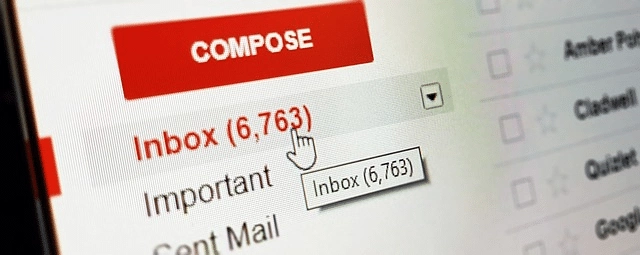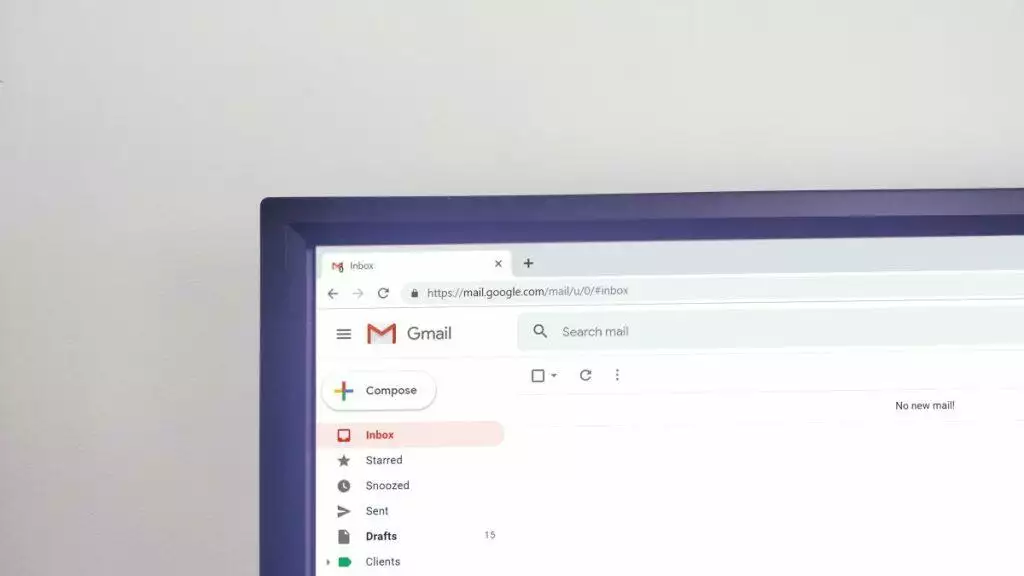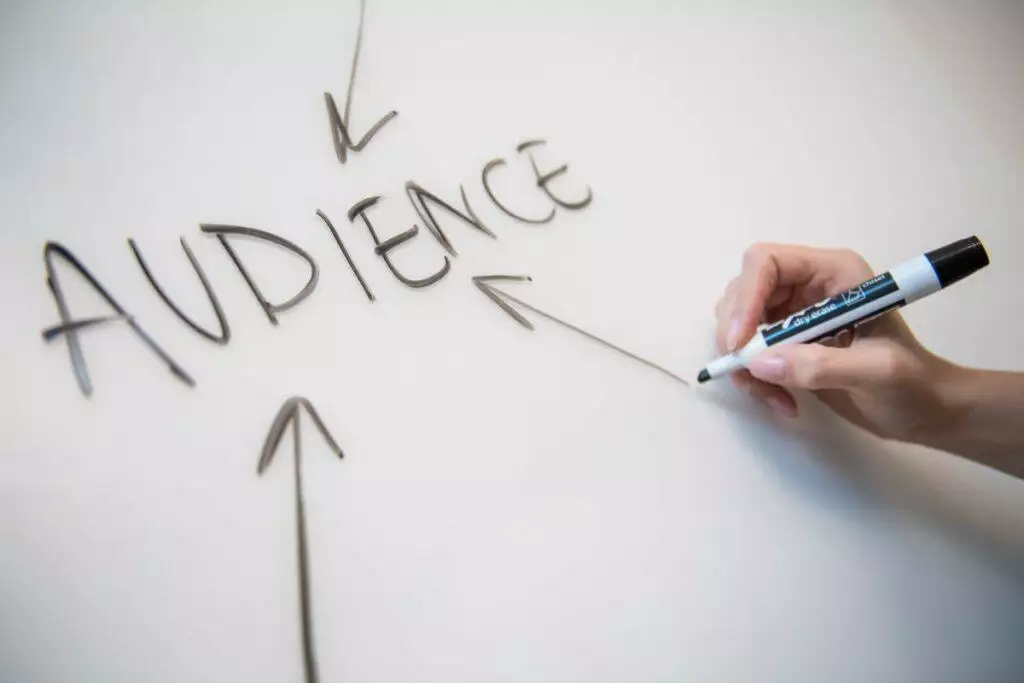At a time when we are inundated with masses of information impossible to process on a daily basis, simply acquiring email addresses to send a newsletter is not enough to make it an effective tool. It is necessary to arouse interest and persuade recipients not only to open the message, but also to read it and respond in the way we expect, such as by following a link to a website or making a purchase.
So how do you create an effective newsletter and increase sales?
Creating a newsletter on a regular basis that will be considered valuable by our target audience is no easy challenge. The mistakes we can make are many. However, by asking ourselves basic questions about our target, potential audience or the specific industry we want to reach, we can design mailing campaigns much more easily.
According to a report prepared by GetResponse [1], in 2022 the average email open rate on the Polish market was 31 per cent. The average click-through rate, on the other hand, oscillated around 3 per cent. This does not seem like much, but we are overestimating the global average. What can be done to improve the statistics generated by newsletters, resulting in increased sales?
1. Set a specific objective for the newsletter
One of the most common purposes for which mailing campaigns are used is to increase sales. This is not the only possible reason. For some, it will be important to build relationships, increase brand recognition or positively influence the sender's reputation and establish themselves as experts. By sending messages, we can also remind people of existing products or services, as well as generate interest, which we will then redirect to our other channels.
Before putting a newsletter into practice, it is a good idea to determine what effects we really want from it and, on this basis, adjust both the text and the graphic layer, as well as any links and redirects. If we want to sell, it is a good idea to look for insights that will allow us to reach people with specific needs and present them with the possibility of achieving them through our product. If, on the other hand, we want to build a relationship with our audience or brand recognition, we can focus on redirecting readers to other channels and thus "extending" their contact with the brand.
When a newsletter is just one of the elements our company uses for content marketing, it is worth thinking about creating an entire email marketing strategy. This will ensure that all communication is consistent and that the individual newsletter mailings can relate to or complement each other.

A good example:
An interesting example that not only achieves its objectives, but is an end in itself, is Bartek Puck's newsletter. What makes it stand out from the rest? It is paid! For £499 a year or £49 a month, readers receive a weekly dose of knowledge about trends, strategies and analyses from the world of technology. The news is carefully prepared and not the shortest. The newsletter is part of a larger whole, which also includes networking meetings or job offers.
Bad example:
An example of an inappropriately set objective can be found in the practice of many online shops of recommending products to customers in the category in which they have just made a purchase. Thus, people who have purchased an electric kettle receive a newsletter in which they are presented with ... more electric kettles.
As a rule, this is due to inadequate automation, but a much better objective in such a situation would be to sell complementary products. In this way, we have the chance to realistically increase sales through newsletters and at the same time not annoy our audience.

2. value for existing and potential customers
The key task of the newsletter is to provide the customer with interesting and unique value tailored to the expectations of the audience. This is usually handled by those responsible for content marketing or communications. This value can take many forms - discounts on purchases for regular recipients and potential customers or information about eagerly awaited new products.
In addition, a newsletter is the ideal tool for communicating factual knowledge in small but regular portions. If it is unique and difficult to obtain elsewhere, we can be sure that our newsletter will gain loyal fans waiting for the next mailing.
It is also a good idea to optimise the length of your message. It is often said that overly long content is a 'shot in the foot', but this does not always have to be the case. The key is who our audience is. Although content on the internet is constantly being shortened, there are still creators producing long and exhaustive content and still being very popular. To test this, we can use a b tests to compare the statistics of longer and shorter messages.

Good example
An example of a good newsletter based on the value delivered to customers can be found in online creator Matilda Kozakiewicz, known as Segritta. Through her psycho-newsletter sent out regularly, but much less frequently than the standard, just once a month, she achieved an open rate of 79 per cent. What approach did she use?
The author has focused on quality rather than quantity. The low mailing frequency allows the author to produce really high-quality content. You can only subscribe to her mailing list when space becomes available. Yes, the subscriber limit is 2,500, which optimises the venture cost-wise, while ensuring that only people who open the messages are on the list. Addresses that have not opened three emails in a row are removed from the list. This builds a sense of exclusivity and encourages regular message opening.
Wrong example
As a counterpoint to Segritta, we can put a great many newsletters whose creators focus on quantity, completely forgetting about quality and value. One example is that of a British English teacher who has built up quite an empire through free online content and paid courses. Unfortunately, her newsletter is mostly advertising. Although it theoretically offers unique value, e.g. free e-books only for people on the mailing list, they mainly contain promotion of her paid courses. To change this, it would be sufficient to add an educational section in each message, e.g. an interesting idiom with examples of use or a mini-exercise. In addition, the newsletter is sent on a daily basis, which makes it very difficult to create valuable content.

3 To personalise or not to personalise?
Personalised messages are often cited as an example of one of the greatest advantages of a newsletter. This is partly true - by properly editing the mailing list, we can reach a precisely defined audience. We can take advantage of this opportunity by sending specific messages to a target group interested in them.
For example, people who bought the first part of the game are very likely to be interested in the next edition. Fans of puzzle games, on the other hand, will not necessarily appreciate being provided with information about new sports games. This type of personalisation definitely affects the effectiveness of newsletters.
Personalisation is often talked about in the context of including data such as the recipient's name. This is standard practice, but as recipients we have become accustomed to it and are not necessarily impressed by it. After all, each of us is aware that the sender has rather basic information about us and does not actually know us personally. What's more, it makes sense with messages in, for example, English-speaking countries, where the first and last names are not conjugated. In Poland, this type of automation is sometimes criticised because of the lack of variety of personal phrases in messages. Of course, we can introduce the vocative form into the system, but this can be problematic with less common names.

Good example
Personalised mailings tailored to specific audiences are used by Allegro, among others. The platform reminds its readers of the products they have recently browsed, so that people who are interested in shopping but have abandoned their basket for some reason can return to it and finalise their payment.
Wrong example
Collecting and analysing information about readers helps us to better tailor the messages we use, as well as the offer itself. However, using too much data, especially private data, can have a negative impact on a company's image. No one likes the knowledge that an entity knows us too well and uses information that we have not given them or are not even aware of.
The most commonly cited example initially described by the New York Times (although it is still unclear whether this is true) is the case of one US grocery chain. The chain's analyst, before the chain cut off communication and stopped responding to a journalist working on the material, allegedly admitted that, with the information they had, their employees were able to pick out with high probability which of their female customers were pregnant - even if they did not buy any related products. By spotting around 20 shopping behaviours (e.g. buying unscented body lotions or supplements containing zinc, calcium and magnesium) occurring at the same time, they were able to assume that a customer was pregnant and even give an approximate due date, and then send her offers related to pregnancy and motherhood.
Due to the dissatisfaction of customers who felt uneasy about the knowledge the company had about them, the company was to decide to create less personalised messages and hide recommended products among random items.

4. readers will judge you by the subject of your message
When creating a newsletter, remember that recipients will judge its usefulness within seconds. This is why the subject line of a message is one of the most important issues in e mail marketing, which, if well crafted, will result in good conversion rates. The subject line should contain relevant information about the content and make it clear what value the recipients will get from reading it. The title of the message should be concise - shorter than the allowable character limit.
The more value we offer to our audience, the easier it will be to create a compelling subject line. If we offer a discount, rebate or launch a long-awaited promotion, readers are more likely to read the message. It can be helpful to add a phrase to indicate that the offer is limited, such as 'Today only...' or 'This is the last two days for...'. This way, people who tend to put off the news and ultimately never return to it will feel they may have missed something.
In a situation where we offer content value, the task of creating an interesting subject line can be more difficult. Again, it's worth going back to the goal we defined earlier and thinking about what need of our audience we can address through the newsletter. If the message is about supporting AI in business, we can ask the suggestive question "Do you already know all about using AI to build a business?". 'Pointing out mistakes' also works well, i.e. any content like '5 mistakes most commonly made by...'. Using concrete numbers also works to our advantage.

Good example
In terms of the ability to create interesting and attention-grabbing mailing topics, there are quite a few examples. In the case of sales newsletters, most companies clearly communicate the benefits of opening the message and taking advantage of the offer. The shoe chain Deichmann regularly uses phrases such as: "last minute!" or "... is coming to an end", instilling in its recipients the feeling that in a moment the offer may be slipping away from their noses and therefore worth checking out right now.
It is worth bearing in mind, however, that often online shops do not necessarily accurately determine the optimum mailing frequency, so even well-constructed messages can sometimes have a repulsive effect.
Wrong example
One of the most trust-lowering actions for audiences is the use of clickbait. One example is a psychologist who, as part of a product promotion, sent out a message to her audience about what not to say to her child. In the end, however, it turned out that, apart from pointing out negative behaviour, the whole thing was only aimed at selling her products. Although the mailing was intended to be tongue-in-cheek, in the end the recipients did not receive the value they expected, but only an advertisement repeated several times at each point.

5. Mailing campaigns - thoughtful design is essential
Although the content of the newsletter is the most important, graphic design and technical issues are equally important. This is why, when planning campaigns and preparing lists of recipients, we should pay attention to how a given template is likely to be received and how to make the text as comfortable to read as possible.
It would seem that the design of a newsletter is something to be taken for granted, as everyone looks alike. This is not entirely true - there are newsletters that are better and less optimised. Consideration should be given, for example, to the issue of visibility on mobile devices, the readability of fonts and the layout of elements when viewed on a phone or tablet.
In addition to issues that are important to interested subscribers, we can incorporate additional elements when sending newsletters. For example, at the bottom of the message, you could include buttons that take recipients to the company's social media profiles. We could also consider a section where we add a link to additional sources and valuable content, e.g. from the company blog, to each mailing.
A legally important issue is compliance with the provisions of RODO, manifested, among other things, by the information clause and the option to unsubscribe from the newsletter. It is worth paying particular attention to this, as the option to unsubscribe must always be visible in the messages, which is generally guaranteed by the newsletter software we use.
Good example
An interesting addition to the visual layer is not only photos, but also video content. Although they will not be playable inside the message, it is sufficient to add a graphic with a 'play' sign and to link the image to, for example, a video on Youtube. An example of this is the Patagonia brand, which redirects recipients to its account, where it publishes valuable content and presents new products.
Wrong example
Nowadays, it is difficult to come across a newsletter that could be considered ugly, but there are still cases of technical problems or deliberate omission of elements such as the unsubscribe option. One Polish gardening newsletter deliberately hides the unsubscribe option, which is only available by clicking on the option to open the message in the browser. People who do not know about this option may therefore feel frustrated by the messages that regularly appear in their email inbox.
[1] https://www.getresponse.pl/baza-wiedzy/raporty/email-marketing-statystyki



